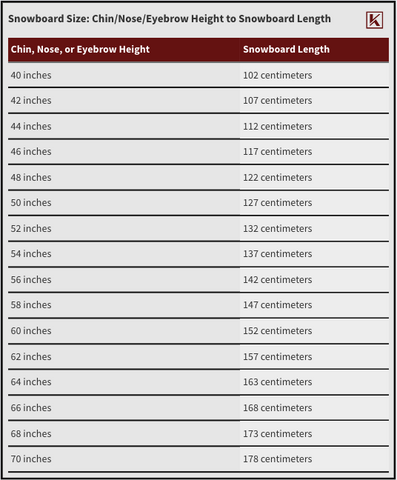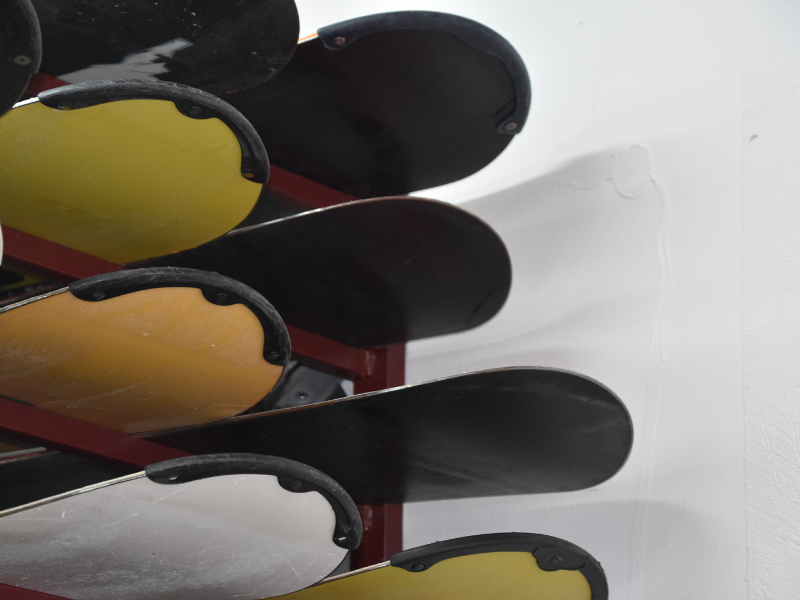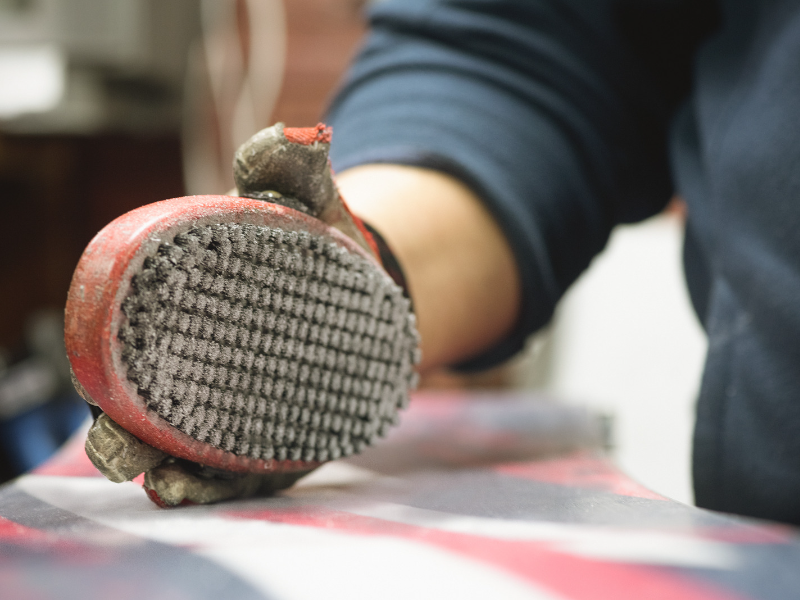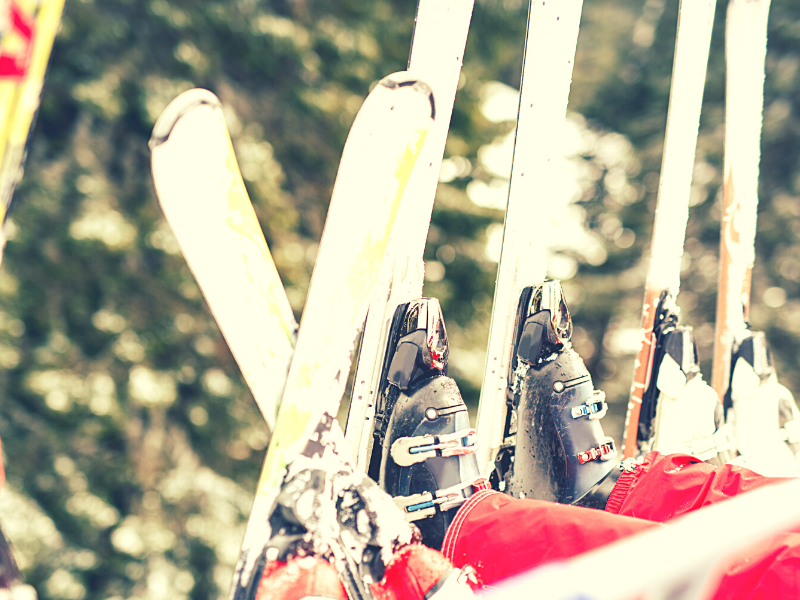Before you can hit the slopes, you need to know your snowboard size. Those new to boarding might not be sure where to start, which can lead to you purchasing a board that’s too wide or narrow for you. So then, how do you measure snowboard size?
To measure your snowboard size, you need both your weight and your height as well as your boot size. Depending on the size of your boots, your experience level, and the stance you prefer, you might need a shorter or longer board as well as one that’s narrower or wider.
In this guide, we’ll tell you everything you need to know to measure a snowboard that’s perfectly sized for you so you can ride in comfort and confidence. Make sure you check it out!
Do I Really Need a Wide Snowboard? What Is a Wide Snowboard Good for?
Let’s begin by discussing one of the factors that will dictate the size of your snowboard, and that’s width.
Wide snowboards come in handy in all sorts of boarding scenarios. When we say wide, just to be clear, we mean a snowboard that exceeds 260 millimeters. Now let’s look at all the reasons why a wide board is such a good choice:
Great Versatility
It used to be that wide snowboard options were rather limiting. Fortunately, that is far, far from the truth anymore.
No matter which type of snowboarding style you’re into as well as your personal board preferences, not to mention your budget, you should be able to find a wide board out there that’s just right.
Less Toe Drag
In snowboarding, a phenomenon known as toe drag can really bring down your day of riding.
Toe drag is when your toes are too far over the edge of your snowboard. Your feet create drag and slow you down. You become your own worst enemy on the slopes, which is a terrible feeling.
While sizing your board properly is the best way to combat toe drag, a wider snowboard will do the trick as well. After all, with more surface area on your board, it’s a lot harder for your toes to go over the edge.
Now, notice how we didn’t say it’s impossible, just less likely!
Okay, so you know that a wider snowboard can be advantageous, but that does automatically mean you need to reach for the widest board at the store? No, of course not!
If your board is too wide, then it’s not going to be responsive enough. You’ll feel clunky and awkward on the slopes. As a beginner, you can feel clunky and awkward enough when snowboarding, so anything that magnifies that is not ideal.
The rule of thumb is this: If your boot size is between 10.5 and 11 or up, then you need a wider snowboard. There’s a lot more that goes into measuring your snowboard size though, so why don’t we discuss that now?
What Is My Snowboard Size?
Your snowboard size is based on several factors; your height, your weight, and your boot size.
You’ll need your height and weight to gauge the length of your board and your boot size to determine the width.
Here’s how it’s done.
Determining Snowboard Length
How long should your snowboard be? It’s time to step on the scale to find out. There’s no need to weigh yourself while wearing your snowboarding equipment and boots. Just dress as you normally would for a weigh-in.
Here’s how your weight correlates to your snowboard length. As an FYI, snowboards are measured in centimeters, not inches, so we’ll use centimeters too.

You also need to measure your height, but not necessarily from the top of your head to the bottom of your feet.
Instead, you can use one of three specific measuring points: your eyebrows, your chin, or your nose.
Measuring Snowboard Length for Beginners:
For beginners, we recommend measuring to your chin. This method also comes in handy for lightweight riders who need a shorter board. Have a friend or family member pull a flexible measuring tape from the bottom of your feet to the bottom of your chin.
Measuring Snowboard Length for the Experienced:
Are you a more experienced rider? Seasoned snowboarders can measure to their eyebrows.
The starting point for measuring is the same here, the bottom of your feet. Measuring up to your eyebrows will mean purchasing a longer snowboard, but that’s ideal for you.
The board length will improve your stability the faster you go. Just don’t be surprised if you find fast turns harder to pull off.
If you’re not sure where to measure to gauge your snowboard length, your nose is a good spot. We’d suggest this for intermediate boarders and more advanced riders as well.
Here are the corresponding snowboard lengths according to the height of your chin, nose, or eyebrows in inches.

If it’s easier to use your entire height from the top of your head to the bottom of your feet to figure out your snowboard length, you can do that as well.
Here’s a chart that shows the appropriate snowboard length according to your height.

Determining Snowboard Width
From the last section, you should recall that the width of your snowboard is measurable according to the size of your boots.
When your boots fit properly, then you have a smidge of overhang. The toes of your boots should be over your snowboard by only a centimeter or two.
That’s how you get the necessary leverage while turning, after all!
We’ve written a post about how tight ski boots should be, but we’ll provide some refresher information here.
The size of the everyday shoes or boots you wear should be about the same as your snowboarding boot size, give or take.
The proper fit is one in which your heel fits into the back of the boot perfectly, your toes touch the toecap yet still have room to move, and your feet don’t hurt when wearing the boots.
If your toes only touch the toecap while your heel is about midway up the boot or your heel is only at the back of the boot while your toes are swimming, then the boots are too big.
If neither your toe nor your heel can fit into the boot comfortably, then they’re too small.
Snowboarding boots will have a degree of flex as well. The boots can either be stiff, medium flex, or soft. These various degrees of flex are designed for different boarding styles.
Once you know the size of your snowboarding boots, you can use this information to calculate the width of your snowboard when measuring from its waist.
The waist is the board’s skinniest point. If your boots have one to two centimeters of overhang on the waist, then you know your snowboard is just wide enough.
Here’s a handy calculator that puts all the information together.
What Do the Numbers on Snowboards Mean?
Remember how we mentioned that snowboarding boots will have some degree of flex, rendering them stiffer or softer? Snowboards themselves also have a degree of flex.
That’s what those numbers you see on the snowboard mean. Before we delve into each numerical meaning, we want to make one thing clear.
Snowboard flex varies by manufacturer. While one snowboard brand might be ultra-flexible, another might be stiffer.
Another point to keep in mind is that men’s boards tend to be stiffer than women’s boards. A woman’s 5/10 snowboard will always feel slightly more flexible than a men’s 5/10. These numbers are only estimated to give you an idea of what degree of flex you should expect.
1 to 3
A 1/10 is the most flexible snowboard you can imagine. It’s not exactly like rubber, but it has a high degree of flex. But there isn't a style that requires a 1/10 on the flex scale.
Once you get into 2 and 3, these are slightly less flexible than a 1 but not stiff at all.
The excellent flex makes a snowboard with these flex ratings ideal for urban freestyle and rail freestyle boarding. You’ll have just the right degree of flex for pulling off all those tricky stunts that leave your friends’ jaws on the floor!
4 to 7
Anything over a 3 is going to be increasingly inflexible, but not to a major degree. For instance, by the time you’re at a 5 on the flexibility scale, you’re at about average flexibility. For freestyle and park snowboarding, a 4 to 7 is just fine.
If you’re into all-mountain boarding, then you want a 5 or 7 in the flex department. This medium or average degree of flex suits the backcountry and groomed runs far more than a very flexible board would.
8 to 10
Once you surpass a 7, the boards are only stiffer and stiffer from there. That’s not such a bad thing when you’re riding in powdery snow, as you want an 8/10 or even a 10/10 stiffness.
What Size Is a 62-Inch Snowboard?
You took some basic measurements, and you believe the right snowboard size for you is 62 inches. What size is this snowboard?
Assuming you’re measuring from your chin, nose, or eyebrows, a measurement of 62 inches requires a 157-centimeter snowboard. If you consult the chart from earlier in this guide, then a 157-centimeter board is a little longer than average.
Is Snowboard Size Based on Height or Weight?
Your snowboard size is based on a combination of both your height and your weight, as well as the size of your feet. You can’t use one number over the other or you could end up with a snowboard length that doesn’t suit your size or your riding style.
Remember as well that you have to account for the size of your snowboarding boots to gauge the right board width.
Signs Your Snowboard Is Too Small
Listen, measuring your snowboard size can be kind of tough, especially if you’re new to boarding still. That’s why, to make your life a little easier, we want to take this section to go over some signs that indicate your board is not the right size.
Here are the ill effects caused by a too-small board:
Your Board Wears Down Fast
Admittedly, snowboard wear happens to a smaller board at a much more accelerated rate than a larger board regardless of whether your board is correctly sized or not. The reason isn’t only that there’s less surface area for a smaller snowboard. It’s also that smaller boards are usually lacking in stiffness.
Flexibility in a snowboard can be great until your board is too soft to really use anymore. Another reason that smaller snowboards wear down faster is that they aren’t comprised of as many materials, and the materials may not be as heavy-duty.
A small snowboard has to be lightweight, and so if it’s made with many tough materials, it’s going to weigh more. That’s a no-go!
You Can’t Ride in Powdery Snow
If your board is too small for you, then you’ll notice it when you hit a powdery slope, especially if you’re riding in deep powder. The board becomes unstable, and the faster you go, the more unstable you are.
You can easily topple over when riding down the slope even if all your other beginner friends are navigating the same slope just fine.
You Have a Lot of Drag
Toe drag, which we explained earlier, is a major issue when you buy a snowboard that’s too small.
You’ll also be impacted by heel drag depending on your riding stance and style. It doesn’t matter really whether your drag is coming from the front of your board or the back. Drag is a drag, and either way, it’s going to slow you down considerably.
Even during moments when you feel like you should be speeding up, such as when descending a big slope, you’ll be slow and sluggish. Until you get a bigger board, there’s no way to lessen this drag, so it will happen every time you ride.
Reduced Stability
It isn’t only your stability in deep, powdery snow that takes a nosedive when your snowboard is too small. Anytime you speed up or try to do a stunt, trick, or jump, your stability suffers for it. This is due to a combination of the short edges of a snowboard and the simple fact that your board size means reduced contact with the snow.
Once you upgrade the size of your snowboard, you should feel a lot steadier. Some snowboarders will intentionally choose a board that’s slightly smaller than what they need, as the size allows for quick and efficient turning, better pressing, and faster weight distribution.
As a beginner, it’s best to stick with a snowboard that suits your height and weight. Once you’re familiar with a board of that size, you can decide whether you want to downsize or stick with the size you’re currently using.
The Right Snowboard Size Is Everything!
As a beginner, you want a smooth experience on the slopes that will ease you into the challenges of snowboarding. That’s why you can’t risk riding on a snowboard that’s too small or too long.
You also want to avoid an overly narrow board or one that’s excessively wide. You’ll only create difficulties for yourself that make riding less fun!
Now that you know how to measure your snowboard size, take your time and find the right board for you. Remember that a board’s length, feel, and flex is dependent on the manufacturer. Good luck!



